
Feel free to add tags, names, dates or anything you are looking for
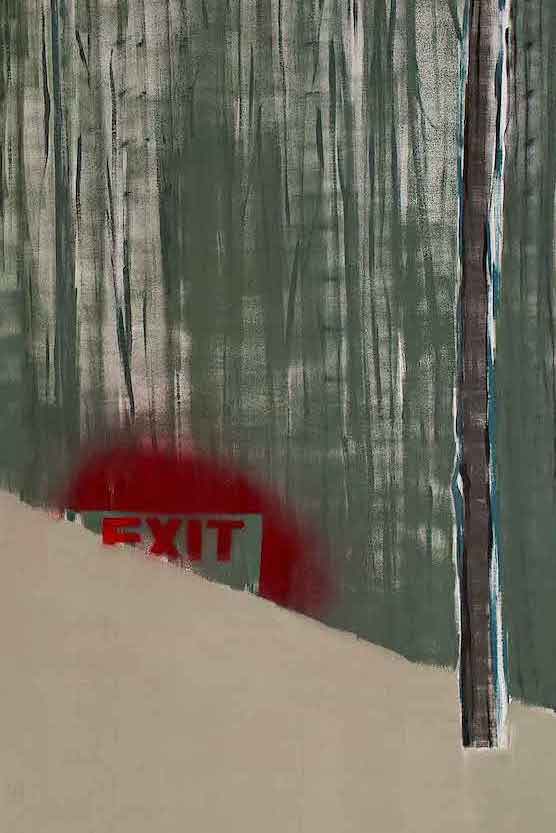
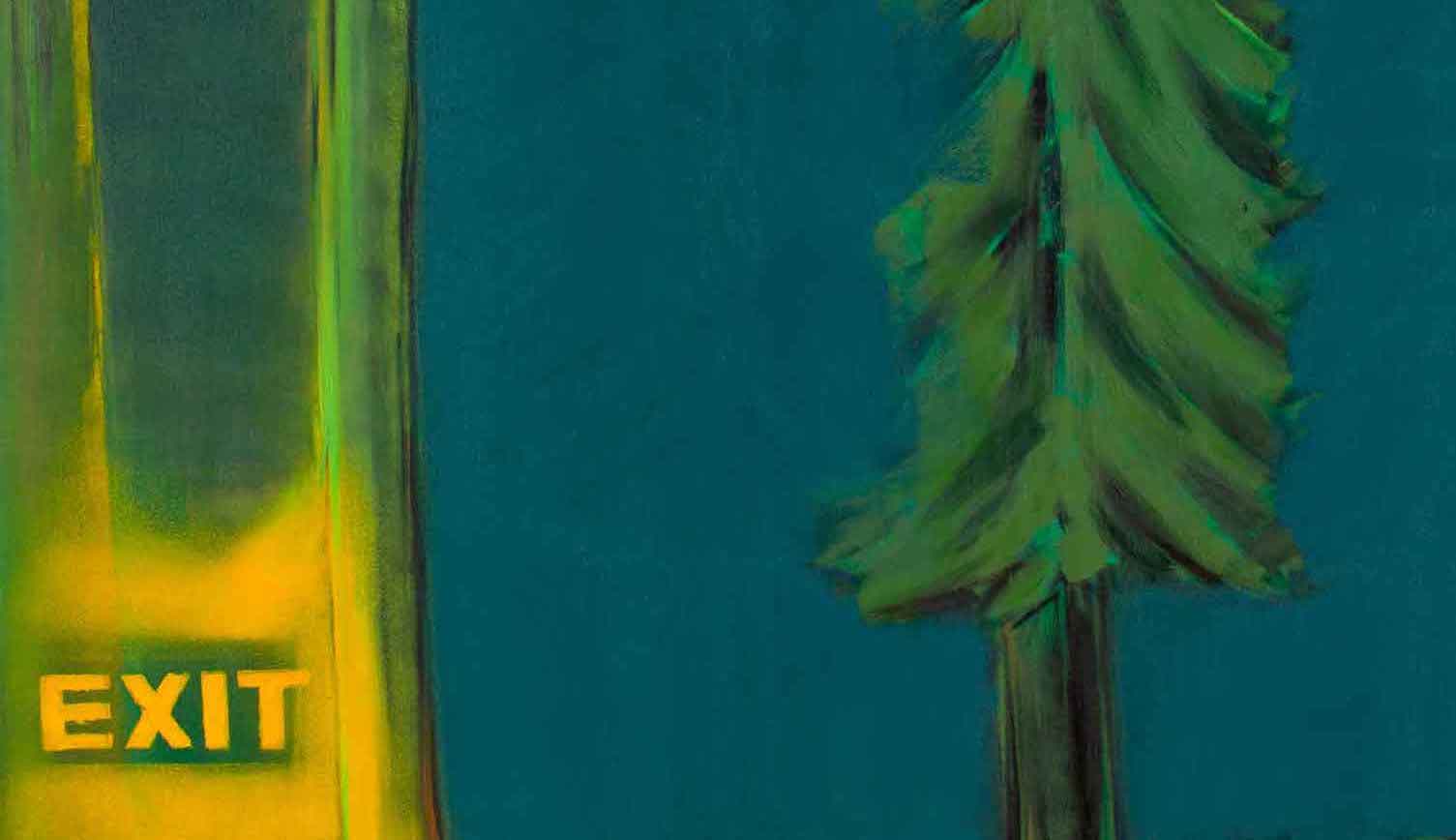
In the light of the ongoing pandemic, visual arts have been more concerned with the idea of timelessness and exploration of underlying spatial concepts. As a result of inherent global changes, interrelation with art has taken a brand-new form, restricting presence of time and space in virtually everyone’s life. Tbilisi History Museum addressed the issue by hosting Misha Gogrichiani’s exhibition, featuring series of minimalist landscapes that share a common urban concept sign: EXIT. This was a truly original display of a handful of significant motives from the history of art, allowing the artist to manifest his signature style in a new light, with exceptional depth of creative thinking. The EXIT sign appears in the form of colorful additions across forest landscape fragments, resembling neon lighting through juxtaposition with pictorial textures of trees, snow and soil.
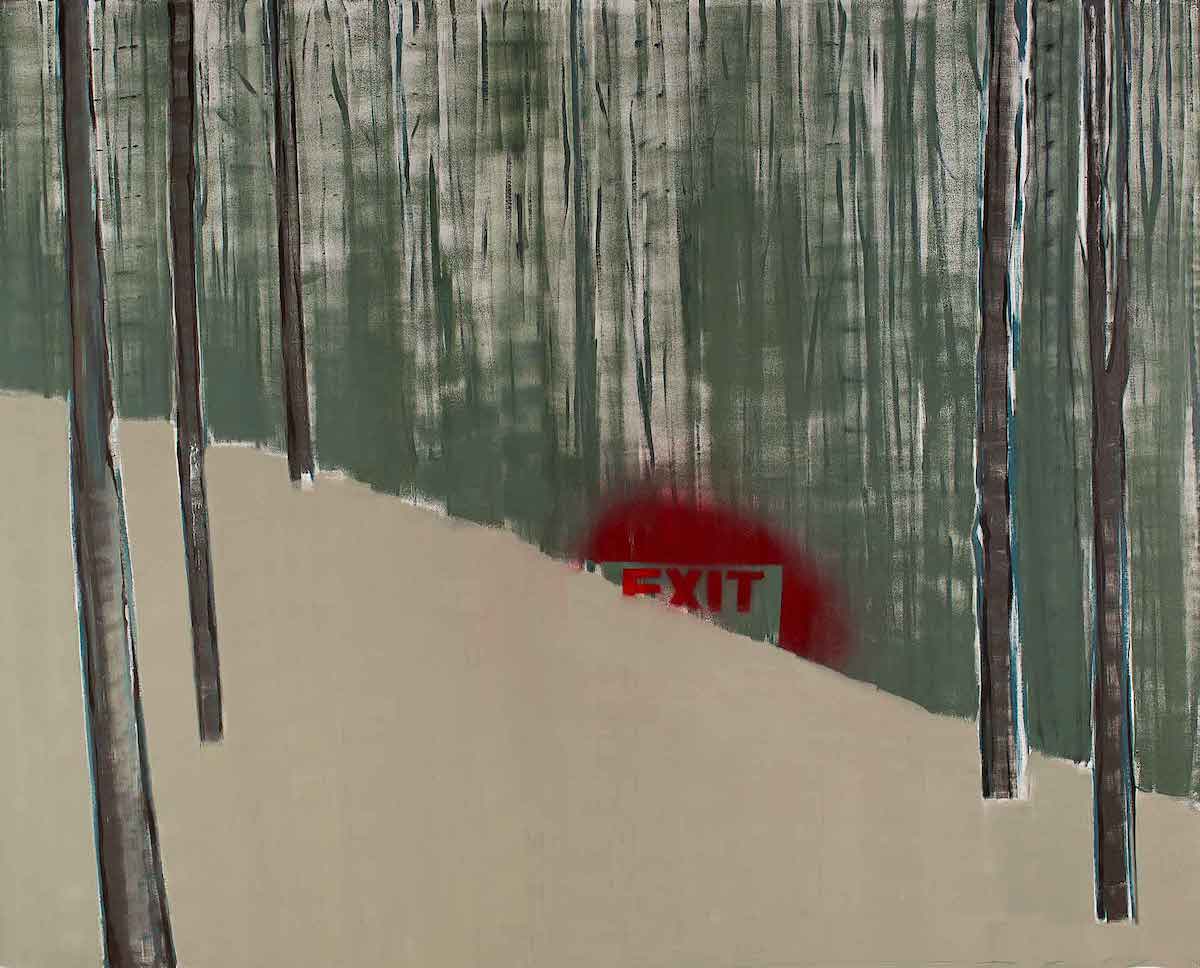
This is a reference to the very time period of conceptual art when artists transformed kitsch aspects of neon letters (which were customary to the commercial realm at the time) in design into a powerful creative statement, therefore granting it the potential to represent the contemporary world as we know it. Neon lettering and scrolling LED signs allowed a variety of artists to make critical statements from the standpoint of conceptual art, by antagonizing overbearing commercial space and consumerism with a weapon of its own making.
Monotonous repetition of the neon EXIT sign in Misha Gogrichiani’s new series of peculiar abstract landscapes is certainly an allusion to the everyday urban routine and the inherent existential crisis, which naturally forces one to look for an escape from this electricity powered world and to pursue shelter in nature. These large-format landscapes portray fragments of tree verticals from a variety of angles and in a range of hues. One of them features a tall silhouette of a fir tree on a neutral, monochromatic background; another one appears as a rhythmic abstract representation of tree verticals, or alternation of blue and white etc.
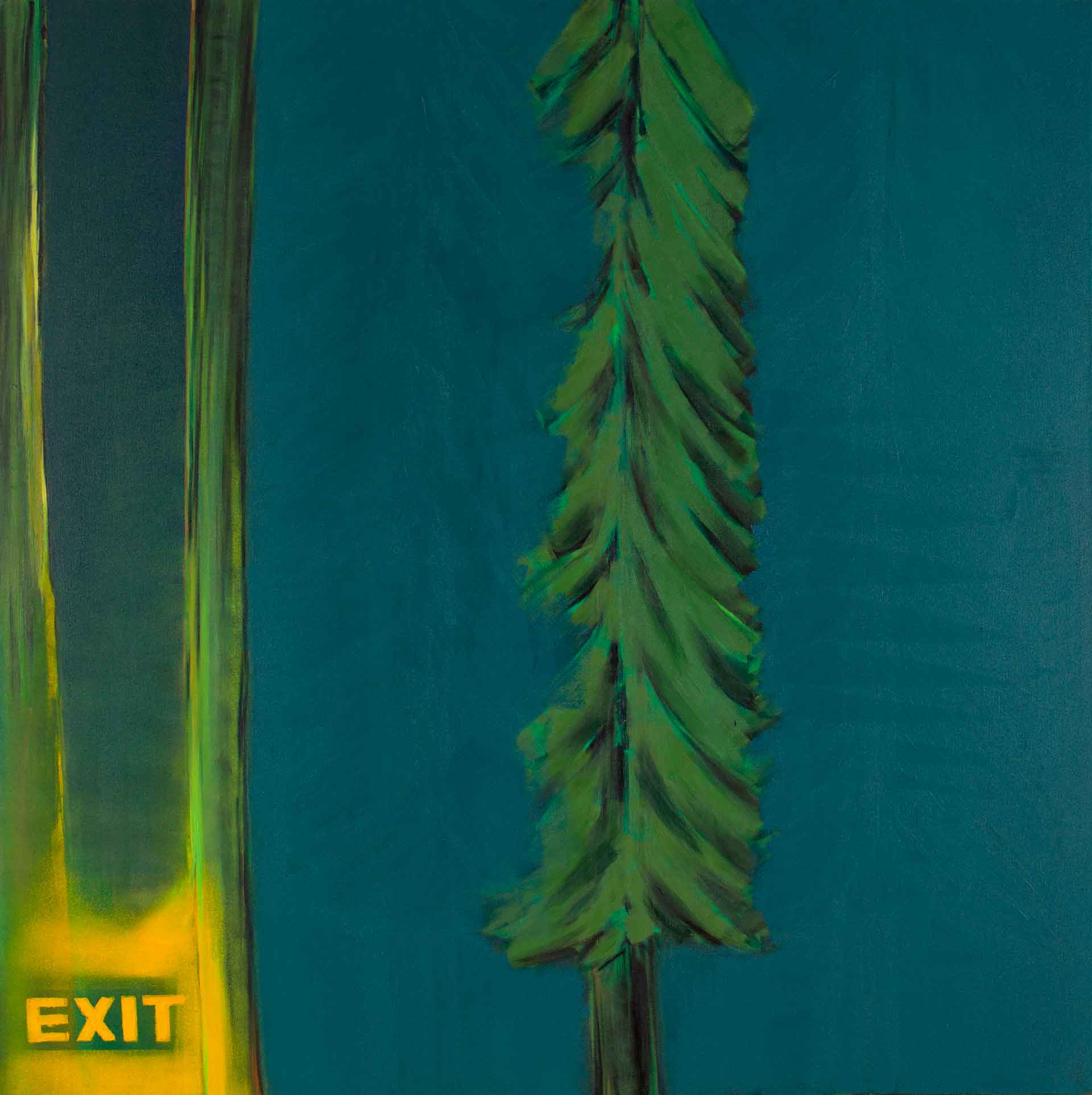
Misha Gogrichiani. Exit. Series. Tbilisi History Museum Exhibition. 2020.
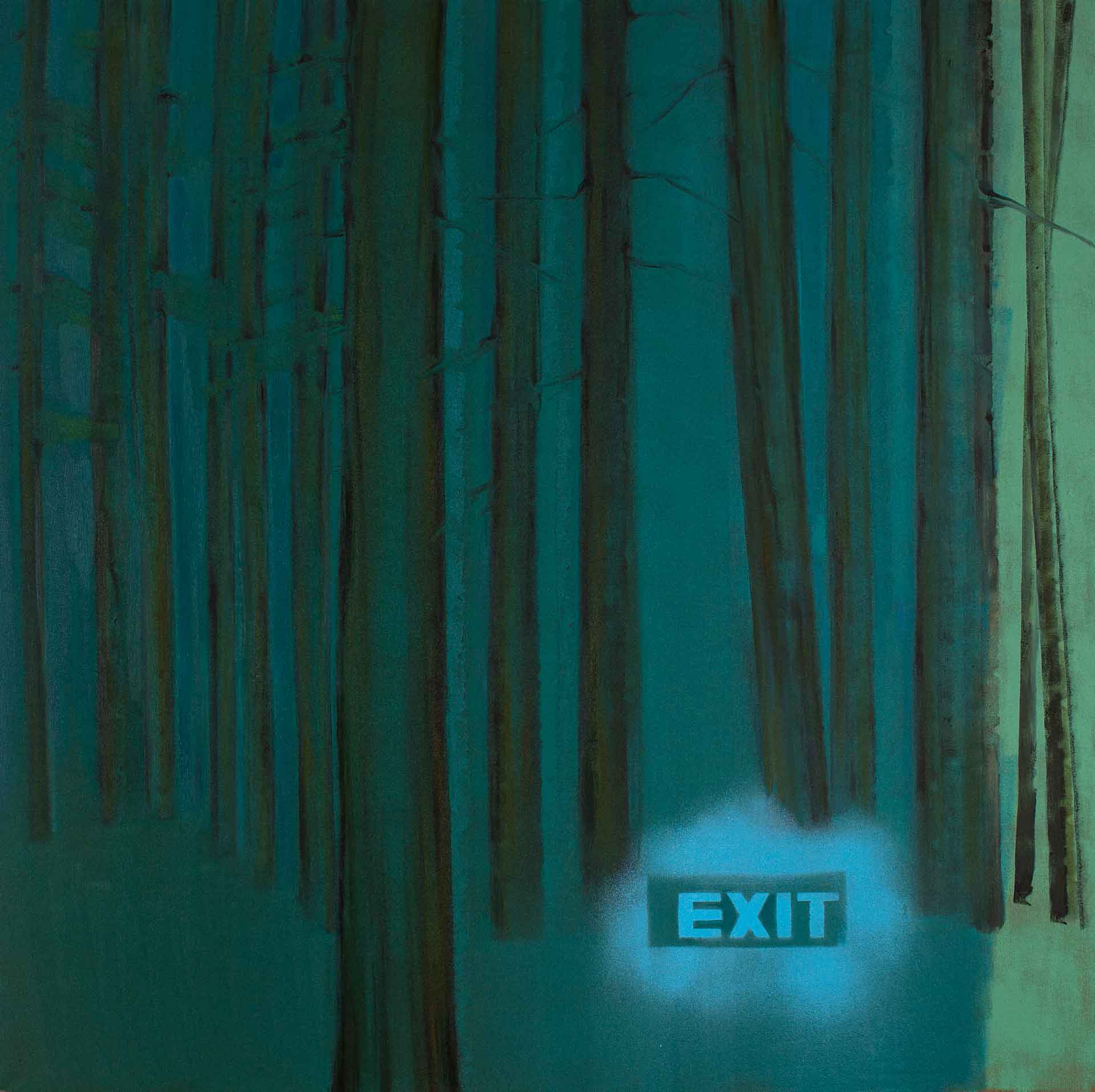
Misha Gogrichiani. Exit. Series. Tbilisi History Museum Exhibition. 2020.

Misha Gogrichiani. Exit. Series. Tbilisi History Museum Exhibition. 2020.
In addition to neon lights, these pieces also allude to a variety of psychoanalytical issues, drawing a connection between the concept of woods and the subconscious, the irrational and hidden desires, which may come to light without warning. Misha Gogrichiani’s woods are certainly much more than primitively exotic images that merely point to nostalgia-fed desires amidst isolation. These forest fragments are a manifest of the natural world of sorts— of its core realities that are so very fascinating and enigmatic.
A variety of other motives from Misha Gogrichiani’s art tend to carry equally captivating metaphysical meaning as well—including Funicular, his pop art triptych from several years ago, which skillfully synthesized nostalgia and humor, as well as the laconic Taxi piece.
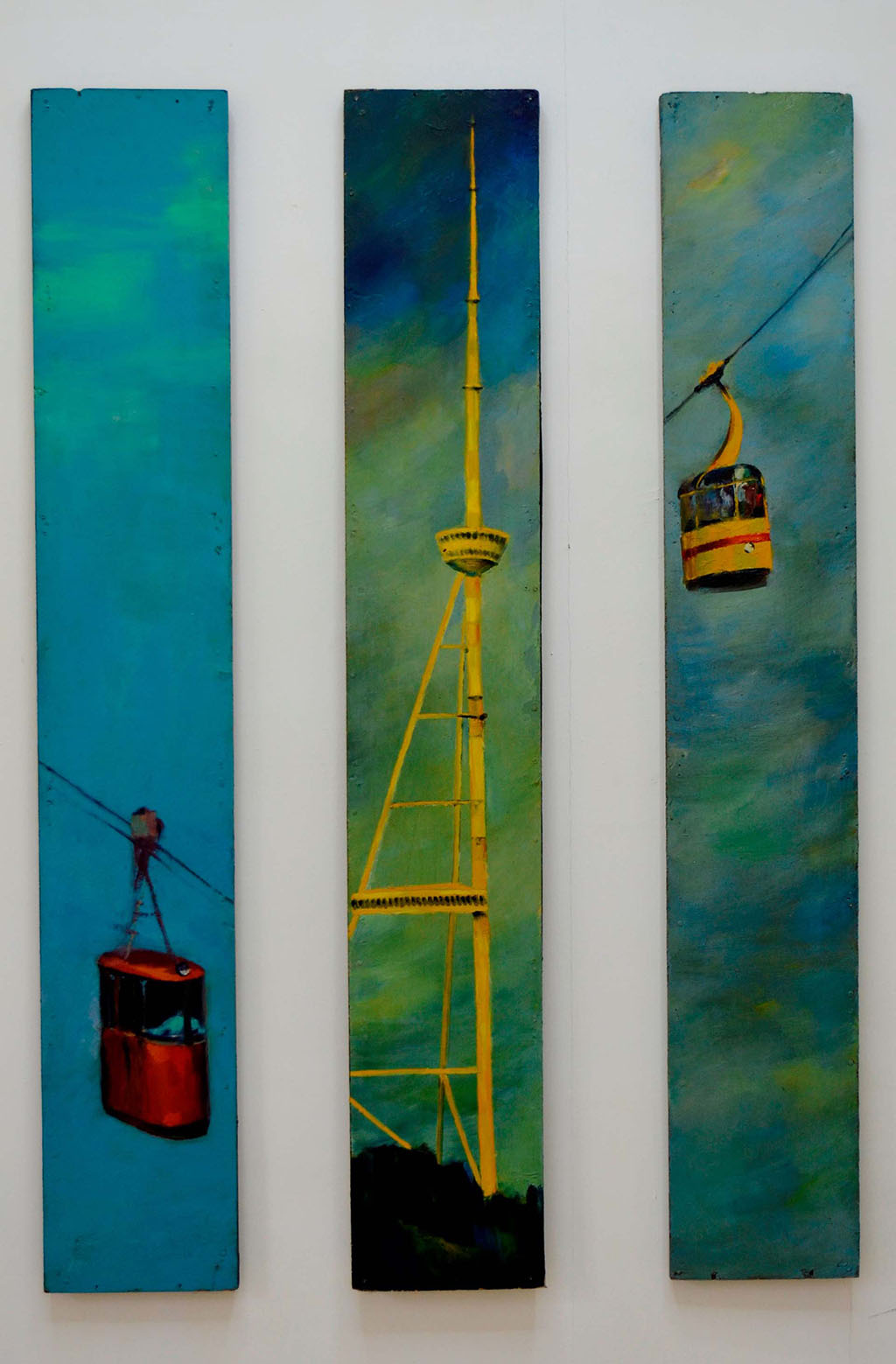
Misha Gogrichiani. Funicular. Triptych. Mixed media on canvas. 158X26 (3).1996.

Misha Gogrichiani. Taxi. Mixed media on canvas. 90X110. 2001.
Exit currently relates to the pandemic, but the symbolic implications of the topics addressed are yet to be explored throughout history. Search for gateways has become a permanent occupation of sorts for Misha Gogrichiani’s generation, with each gateway gaining unique meaning in correspondence to its context. At times, it would symbolize escaping remains of the Soviet empire and prevailing economic crises or allude to intrinsic existential issues and adversities experienced within the art realm. Misha Gogrichiani is one of the few artists from the 1990s that chose a particularly difficult path for self-expression, exploring novel methods of painting. This was a time when young artists were mostly interested in new technologies, demonstrating a degree of indifference towards historic classical painting traditions. Nevertheless, this period witnessed the rise of a powerful new wave of contemporary Georgian art, representatives of which successfully demonstrated their ability to find a distinct voice to communicate individual experiences through the language of painting. The process was certainly not easy, as not only did they have to discover a new verbal language in order to decipher the most pressing large-scale issues and opportunities of their time, but they also had to paint an accurate picture of the period. As exemplified by his two pieces, Express and Hotel Iveria, Misha Gogrichiani has clearly managed to discover a signature minimalist style—as minimalist as can be—easily comprehensible, seemingly simplistic images, charged with countless coded messages that provide insight into personal stories and experiences of his generation.
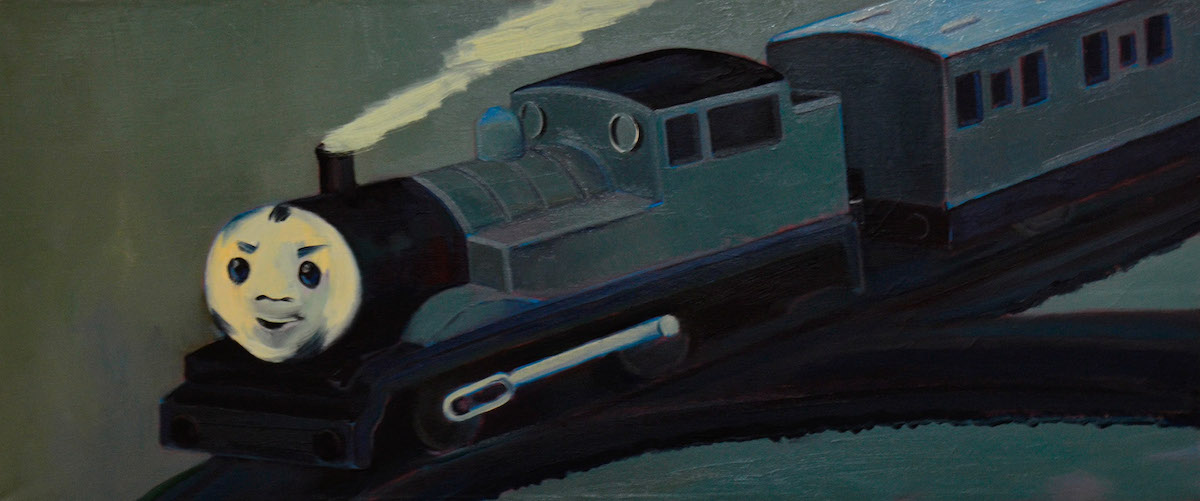
Misha Gogrichiani. Express. Oil on canvas. 50X122. 2007.
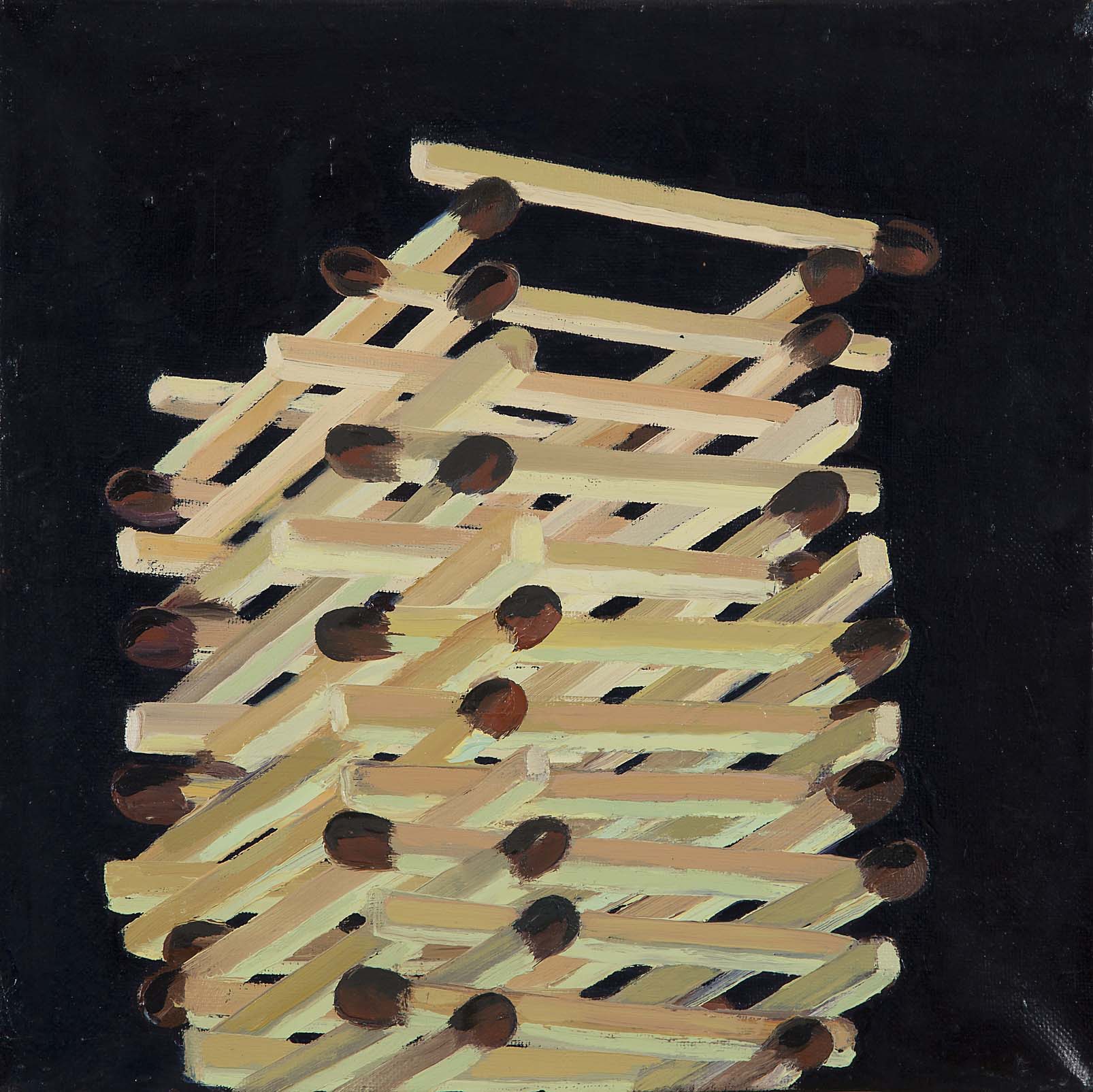
Misha Gogrichiani. Hotel Iveria. Oil on canvas. 40X40. 2003.
Nostalgic motives behind his artistic interpretation of seemingly worthless common objects, which he manages to charge with significant meaning, are remarkable. Through them, Misha Gogrichiani unites a variety of individuals, allowing them to converge in a common past and to grasp the idea of shared experiences.
"Exit. Series."
Photo Credit: Sandro Sulaberidze